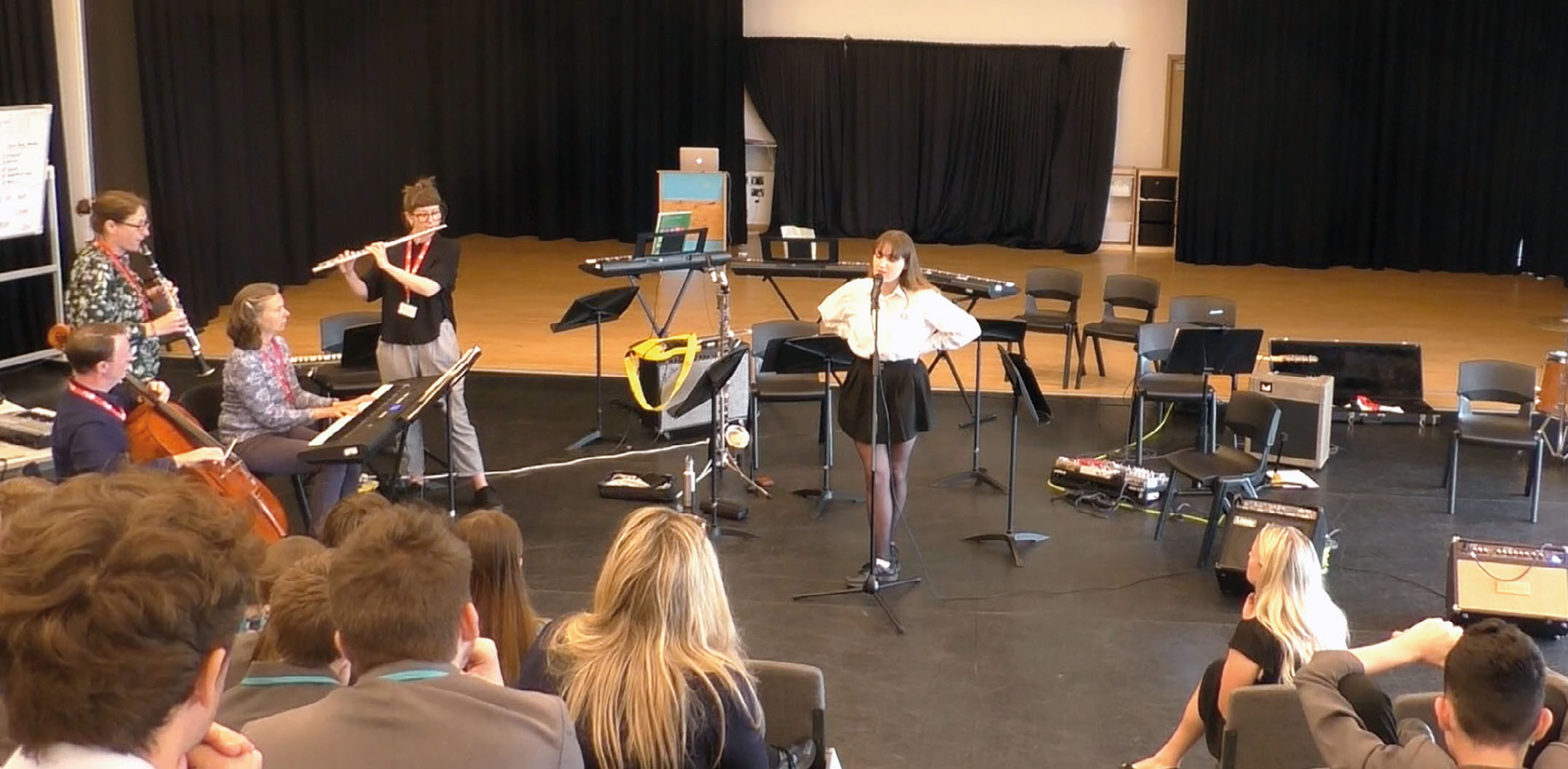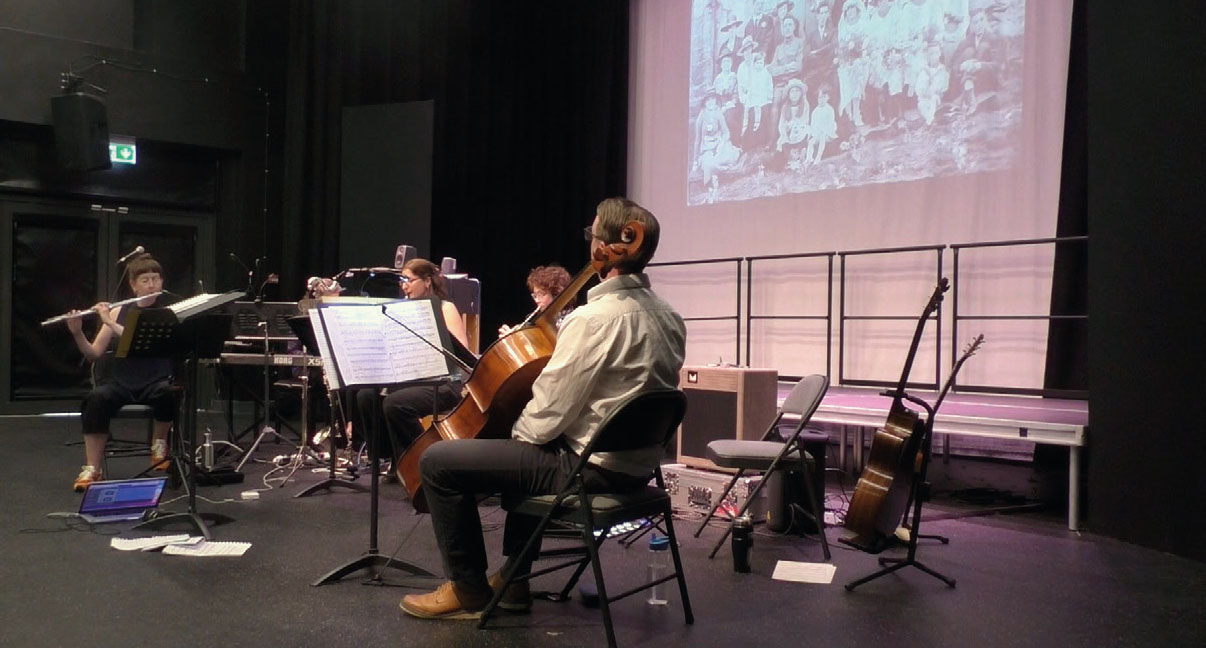
For thousands of people the South Downs is an environment for recreation, and for enjoying the stunning scenery. But for hundreds of years its distinctive and unique environment has inspired artists including poets, landscape painters, writers, and composers.
The Brighton based Orchestra of Sound and Light (OSL) decided to celebrate this history by commissioning a songbook of brand-new pieces about the South Downs from composers and students in schools and colleges. Four professional composers wrote stylistically very different songs for a mixed ensemble that toured venues and schools across the region (singer, flute, clarinet, electric guitar, keyboard and cello). Each composer's text gives a very different perspective on landscape and history. Shirley J. Thompson OBE set A Hymn to the Evening by Phillis Wheatley (1753–1784), the African-American author. Rowland Sutherland set a poem by Charlotte Turner Smith (1749–1806). Ed Hughes adapted words by an early contributor to the Mass Observation Archive (Marion Robinson, 1937) who lived near Felpham and was inspired by William Blake and the skies over the South Downs. Evelyn Ficarra set a poem by contemporary Brighton poet, Valerie Whittington, inspired by the song of larks over the Downs.
Students from BHASVIC (Brighton, Hove & Sussex Sixth Form College), East Sussex Academy of Music, and Hastings Academy also composed songs, ranging from individual four-minute songs to improvised compositions for GCSE Music students working in small groups.
 A student at Hastings Academy performs her original song for the South Downs Songbook supported by members of the Orchestra of Sound and Light. Courtesy OSL
A student at Hastings Academy performs her original song for the South Downs Songbook supported by members of the Orchestra of Sound and Light. Courtesy OSL
Wealth of advice
Building on previous projects, including soundwalks during lockdown, with the Brighton Festival, the South Downs National Park Authority, Ditchling Museum of Art+Craft, and Create Music and West Sussex Music Hub, the orchestra was keen to maximise the reach of its project. The OSL's director and University of Sussex's professor of composition Ed Hughes, said, ‘We love playing live, and working with students in workshops. The OSL's musicians are brilliant at supporting the amazing students we work with to shape, perform and record their songs. But we know that funding for live music will only stretch so far, and so we wanted to find ways to share resources online, including how to be inspired by landscape to make new music, and how to get started with composing and develop your ideas, both during and beyond the life of the project.’
As a team, we approached education experts Duncan Mackrill and Peter Davison. Mackrill designed an education resource pack to support KS3, GCSE, and A Level Music. This is free and is downloadable from the orchestra's website. At the core of the pack are interviews with the four professional composers – Shirley J. Thompson OBE, Rowland Sutherland, Evelyn Ficarra and Ed Hughes – about their songs and how they compose.
Each composer was asked the same set of questions, creating a wealth of advice on getting started, techniques and ideas, using technology, structure, and getting ‘unstuck’ as a composer. The interviews are available as videos, but the answers are also helpfully gathered into one-stop PDFs so students and teachers can quickly jump to different ideas and approaches suggested by each composer.
 The Orchestra of Sound and Light work with students from Brighton and Hove Sixth Form College on their compositions inspired by the history and culture of the South Downs
The Orchestra of Sound and Light work with students from Brighton and Hove Sixth Form College on their compositions inspired by the history and culture of the South Downs
‘Enthusiastic’ response
During the planning of the project, the team realised that the sounds of the South Downs could become part of the texture of some songs, and that this could also offer a way in to composing for DAW (digital audio workstation) based composers. Mackrill said: ‘We wanted to identify and provide support materials for the common challenges young composers encounter. Peter's sound samples, collected from different places on the South Downs, were compiled into a library of MP3 and WAV files suitable for use in any sequencer and include a mix of tuned and unpitched sounds such as rivers and streams, wind through leaves, and birdsong at Barcombe, offering a way into the songbook for those wanting to mix technology with instruments, or just write for computer alone.’
The response to the project overall, which was funded by the Arts Council England National Lottery Project Grants, has been enthusiastic. A member of the audience at the premiere (at Sussex's Attenborough Centre) commented, ‘I enjoyed the common theme, the educational resources (these look phenomenal), the poetry, and the sense of a coherent whole.’ Kym East, music subject leader at Hastings Academy, said, ‘This was the perfect activity to get the pupils prepared for their Year 11 composition – the free resource pack with its ideas for composing is ideal’. Jo Hatton, music teacher at BHASVIC, said, ‘The Orchestra of Sound and Light's workshops were very supportive of our developing musicians, enabling all students – from experienced composers to those taking their first steps – to develop confidence and skills. The concert was uplifting and motivating for both students and audience members. The downloadable pack, with its practical suggestions for composing and comprehensive sample library, is sure to motivate and support our future musicians.’
The South Downs Songbook digital composing resource pack is free to all and downloadable from www.orchsoundlight.org/tickets
Listen to the songbook: www.orchsoundlight.org/sdsrecordingsscores




